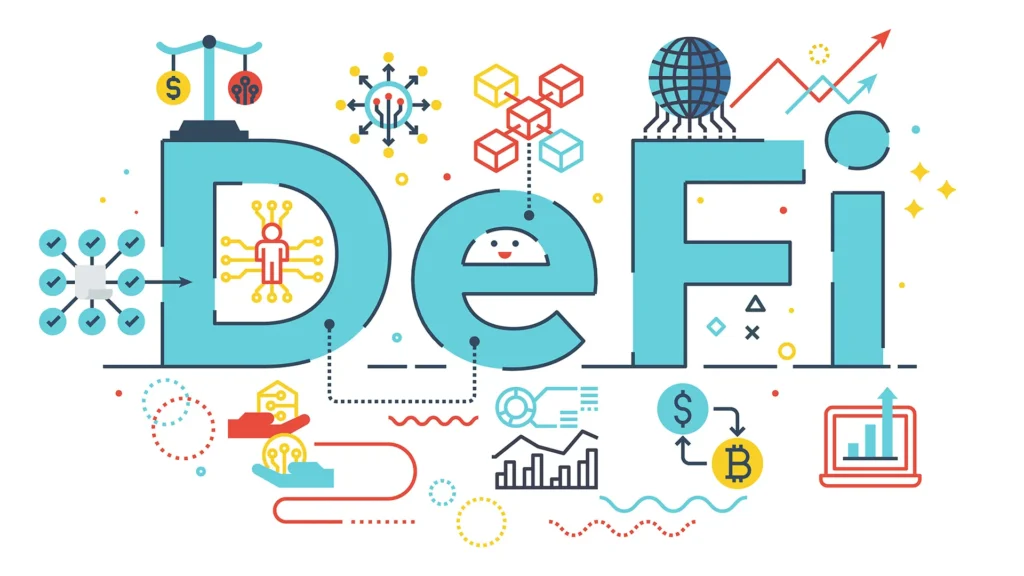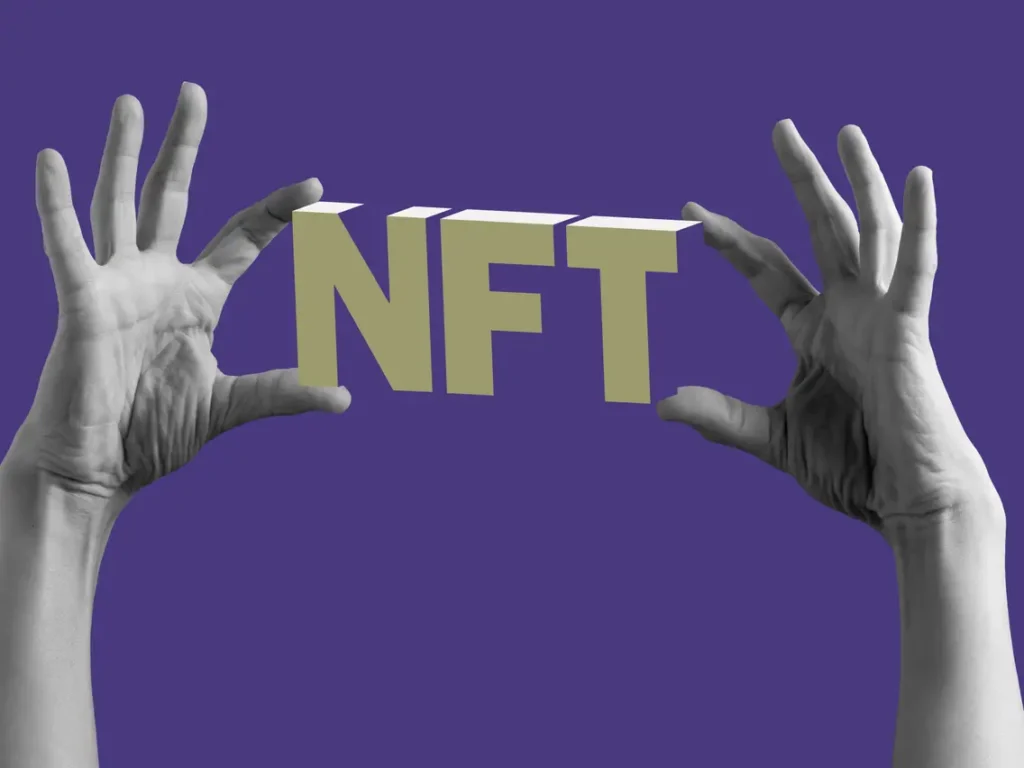The internet is constantly changing, and Web3 is like the next big update. Imagine the internet where you have more control and ownership over your stuff online. That’s Web3 Trends!
Here’s the thing: Even though Web3 faced some challenges in 2023, like drops in crypto value and new rules, it’s still growing fast. There are over 23,000 developers working on Web3 projects, and the market is expected to be worth almost $50 billion by 2030! This growth is fueled by cool new ideas, like using artificial intelligence to make Web3 more secure and efficient, and turning real-world things like houses or artwork into digital tokens that can be easily bought and sold in parts.
Therefore, we decided to favor curiosity through this article, outlining the characteristics of this technological innovation by listing the latest crypto and Web3 Trends.
Top 15 Crypto and Web3 Trends
- Artificial Intelligence (AI) in Blockchain
Enhanced Security and Efficiency: AI can analyze vast amounts of blockchain data to identify anomalies and suspicious patterns, improving fraud detection and preventing cyberattacks. Additionally, AI can automate repetitive tasks in blockchain processes, streamlining operations and boosting efficiency.
Smart Contract Analysis: AI-powered tools can analyze smart contracts for vulnerabilities and potential bugs before deployment, minimizing the risk of exploits and financial losses.
Case Study: Chainlink (LINK) integrates AI oracles into its blockchain network to provide secure and reliable off-chain data for smart contracts. This allows for the development of more complex and dynamic applications in web3 trends.
- Real World Assets (RWAs) on Blockchain
Definition: RWAs represent physical or tangible assets like real estate, art, or commodities. By tokenizing RWAs on a blockchain, these assets can be represented digitally and divided into smaller ownership units (fractional ownership).
Benefits of Tokenized RWAs:
- Increased Liquidity: Tokenization makes RWAs more tradable and accessible to a wider investor pool, increasing their liquidity.
- Fractional Ownership: Allows for smaller investments in high-value assets, democratizing access to previously exclusive investment opportunities.
- Improved Efficiency: Streamlines transactions and reduces administrative hurdles associated with traditional asset ownership.
Case Study: Templum Markets, a security token platform, successfully tokenized a portion of a Manhattan skyscraper, allowing investors to buy shares in the real estate.
3. GameFi: The Rise of Play-to-Earn
Concept: Play-to-Earn games reward players with cryptocurrencies or NFTs for their in-game activities and achievements. This creates an economic model where players can earn real-world value by playing the game.
Economic Model: Play-to-Earn games often utilize in-game tokens that can be used to purchase items, upgrade characters, or trade with other players. Players can then sell these tokens on cryptocurrency exchanges for real-world profit.
Benefits:
Gamers: Earn rewards for their time and skill, potentially generating income while playing.
Developers: Attract and retain players by offering a compelling economic incentive.
Example: Axie Infinity, a popular Play-to-Earn game, allows players to collect, breed, and battle NFT creatures. Players can earn crypto tokens (AXS) through gameplay, which can be sold on exchanges.
- Improved Scalability and Interoperability Solutions
Challenges: Existing blockchain networks, like Ethereum, can struggle with scalability, meaning they can become slow and expensive to use when experiencing high transaction volumes. Additionally, interoperability issues arise when different blockchains cannot communicate with each other seamlessly.
Scalability Solutions: Developers are exploring various approaches to improve scalability, including:
Sharding: Divides the blockchain into smaller partitions (shards) to increase transaction processing capacity.
Layer-2 solutions: Processes transactions off the main blockchain, reducing the load on the core network.
Interoperability Efforts: Initiatives like Cosmos (ATOM) and Polkadot (DOT) aim to create interoperable blockchain ecosystems that allow different blockchains to communicate and exchange data.
- Focus on User Experience (UX) and Security
Importance of User-Friendly Interfaces: Web3 trends adoption requires user-friendly interfaces that make interacting with blockchain technology simple and intuitive.
Security Features: Strong security protocols are crucial to protecting user funds and assets in the Web3 space.
Advancements:
User Wallets: Development of user wallets with intuitive interfaces and advanced security features, like multi-signature wallets for added transaction authorization.
- Cryptocurrency ETFs and Regulatory Clarity
Impact of ETFs: Cryptocurrency Exchange-Traded Funds (ETFs) would allow traditional investors to gain exposure to cryptocurrencies without directly owning them. This could significantly increase mainstream adoption by making cryptocurrencies more accessible and familiar to a wider audience.
Regulatory Landscape: Regulators worldwide are still grappling with how to best regulate the cryptocurrency market. Clear and consistent regulations would provide certainty for businesses and investors, promoting innovation and growth in the industry.
- Increased Investment from Traditional Institutions
Growing Interest: Established financial institutions and corporations are increasingly exploring the potential of crypto and Web3 trends. This includes major investment banks, hedge funds, and technology companies.
Reasons for the Trend:
- Exploring Investment Opportunities: Seeking new investment opportunities in a rapidly growing market.
- Developing Blockchain-Based Solutions: Looking to leverage blockchain technology for streamlining internal processes, creating new products, or enhancing existing services.
Example: JPMorgan Chase has developed its own blockchain platform, JPM Coin, for facilitating faster and more secure cross-border payments.
8. Evolution of DeFi Protocols

Definition: DeFi refers to a financial system built on blockchain technology, eliminating the need for intermediaries like banks or traditional financial institutions. Core functionalities include:
Lending and Borrowing: Users can lend or borrow cryptocurrencies without relying on traditional financial institutions.
Trading: Decentralized exchanges (DEXs) allow users to trade cryptocurrencies in a peer-to-peer manner without a central authority.
Future of DeFi: We can expect more sophisticated DeFi protocols offering a wider range of financial services, potentially including:
Derivatives: Enabling complex financial instruments like options and futures contracts.
Insurance: Decentralized insurance protocols offering peer-to-peer insurance solutions.
9. Rise of Decentralized Autonomous Organizations (DAOs)
Definition: DAOs are community-owned and governed organizations that operate on blockchain technology. Decisions are made collectively through proposals and voting by token holders.
Applications of DAOs:
Governance: DAOs can be used to govern DeFi protocols, investment funds, or even social media platforms.
Venture Capital: DAOs can pool resources to invest in startups and other ventures.
Case Study: The DAO, a venture capital DAO, famously raised over $150 million in its initial coin offering (ICO) in 2016.
10. SocialFi: The Intersection of Social Media and DeFi
Concept: SocialFi aims to create a social media experience where users own and monetize their data and content. This is achieved by integrating DeFi elements like tokens and rewards into social media platforms.
SocialFi Platforms: Examples include:
** Minds:** A social network that rewards users with tokens for creating and curating content.
Rally: A platform where creators can launch their own social tokens to build communities and monetize their content.
11. Decentralized Identity (DID)
Concept: DIDs are digital identities stored on a blockchain, giving users complete control over their personal data. Unlike traditional online identities controlled by platforms, DIDs empower users to decide what information they share and with whom.
Benefits of DID:
Data Privacy: Users can choose which data points to share with different applications or services.
Security: Reduces the risk of data breaches by eliminating centralized repositories of personal information.
Use Cases: DIDs have the potential to revolutionize various aspects of online interaction, including:
Know Your Customer (KYC): Streamlining identity verification processes.
Data Sharing: Providing users with more control over how their data is used.
12. Metaverse: A Decentralized Virtual World
Definition: The metaverse refers to a network of interconnected 3D virtual worlds where users can interact, socialize, and participate in various activities. It holds the potential for creating immersive online experiences that blur the lines between the physical and digital worlds.
Role of Blockchain and Web3 Trends: Blockchain technology plays a crucial role in building a decentralized metaverse. It enables:
Ownership of Digital Assets: Users can own and trade virtual assets like land, avatars, and items within the metaverse, secured on a blockchain.
Interoperability: Blockchain allows for seamless movement of avatars and assets between different metaverse platforms.
Example: The Sandbox is a blockchain-based metaverse game where users can purchase virtual land parcels, create experiences, and monetize their creations.
13. Web3 Gaming: Beyond Play-to-Earn
Building on Play-to-Earn: While Play-to-Earn offers exciting new monetization models, Web3 gaming has the potential to go beyond just earning.
Broader Potential:
- User Ownership: Web3 games can empower players with true ownership of in-game items and characters, which can be traded or used across different games.
- Community Governance: DAOs can be used to govern game development and decision-making within gaming communities.
- Future Vision: Web3 gaming has the potential to create a more immersive and engaging gaming experience, fostering a sense of community and ownership for players.
14. Sustainable Blockchain Solutions
Environmental Concerns: Traditional Proof-of-Work (PoW) blockchains, like Bitcoin, require significant computing power, raising concerns about their energy consumption and environmental impact.
More Sustainable Protocols: Alternative consensus mechanisms are emerging to address sustainability concerns. Here are two examples:
- Proof-of-Stake (PoS): Secures the network through coin ownership instead of computational power, significantly reducing energy consumption.
- Proof-of-Authority (PoA): Relies on trusted validators to secure the network, making it suitable for permissioned blockchains with a limited number of participants.
- The Road Ahead: Transitioning to more sustainable blockchain protocols is crucial for the long-term viability of the technology.
15. NFTs Beyond Digital Art

Success in Digital Art: NFTs have revolutionized digital art ownership and monetization, allowing artists to sell unique digital works directly to collectors.
Expansion into Other Areas:
Music: Platforms like Mint Songs allow musicians to sell limited edition NFTs of their songs, offering fans a new way to collect and support their favorite artists.
Ticketing: NFT ticketing offers advantages like eliminating scalping and providing fans with verifiable ownership of their event tickets.
Memberships: NFTs can be used to create exclusive memberships for communities, offering benefits like access to special events or content.
Case Study: Kings of Leon released their album “When You See Yourself” as an NFT, generating millions of dollars in sales and demonstrating the potential of NFTs in the music industry.
Final Words
Even though Web3 trends is a hot topic with a lot of excitement, it’s still confusing for many people. This new version of the internet is full of possibilities, but it’s also unclear exactly what it will look like. Here’s what we know so far: Web3 trends seem to be all about giving users more control and keeping their data private. It’s also built around using data in new ways and making things easier to use. Web3 trends are likely to touch every part of our lives eventually, with things like turning real-world objects into digital tokens and making secure online transactions. There’s still a lot to figure out, but the web3 trends we’re seeing are just the tip of the iceberg.
Stay tuned with Latest Web3 News for more valuable insights like this!
